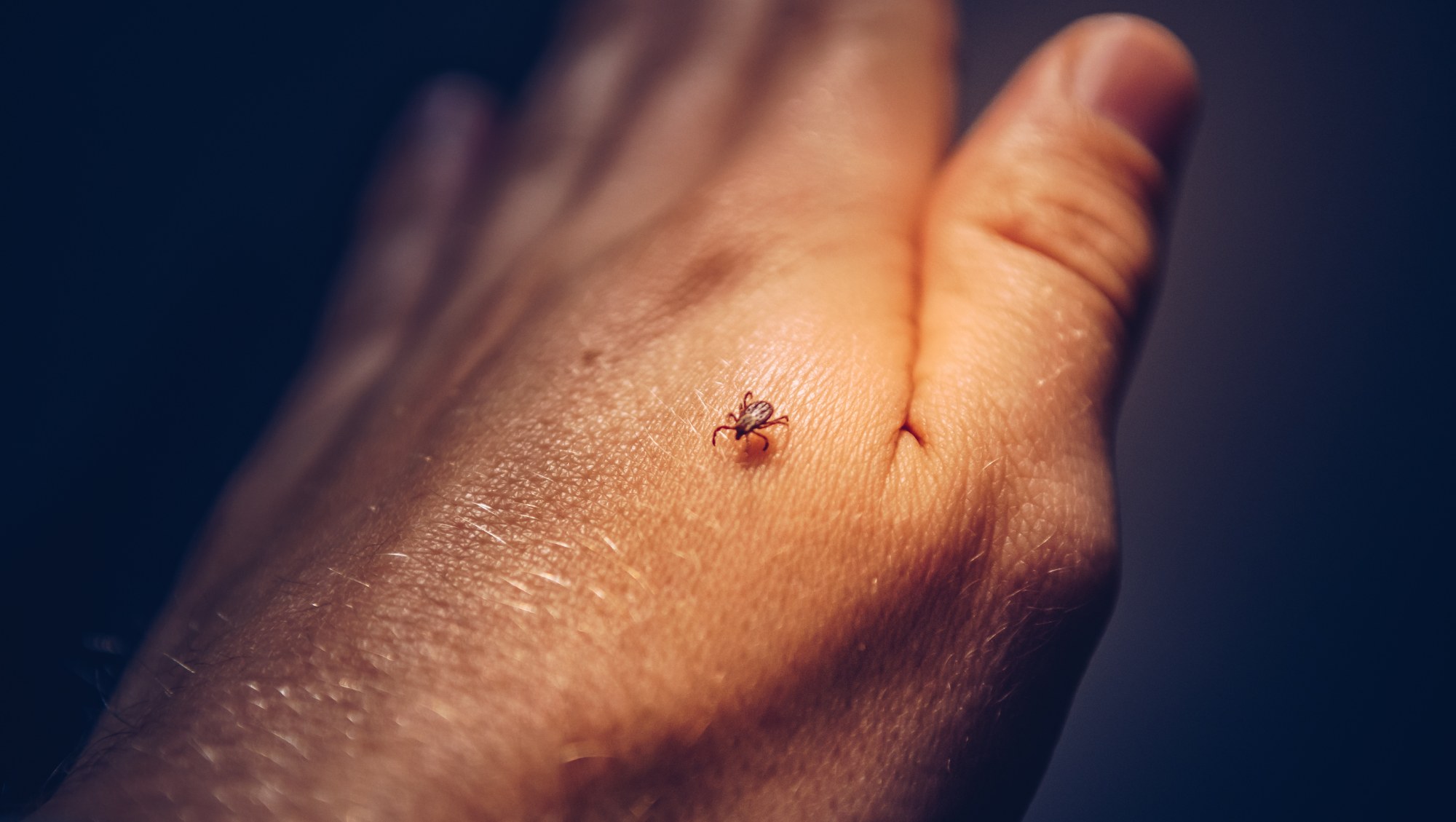Ticks and Disease
Ticks feed on hosts by cutting the skin and inserting a hollow tube to suck the blood. Most tubes have a barbed tip and will emit a cement-like substance to hold the tick firmly to the host. Furthermore, the tick also injects a substance that acts like an anesthetic so the host cannot feel its presence.
Ticks that feed on multiple hosts run the risk of spreading bacteria, pathogens, and blood-borne diseases to the next host. Diseases commonly spread by ticks include:
• Lyme disease
• Babesiosis
• Ehrlichiosis
• Tick-borne Relapsing Fever
• Tularemia
• Rocky Mountain Spotted Fever
• Tick Paralysis
What Attracts Ticks to Your Home?
Ticks are attracted to warm climates and landscapes, containing tall wispy grass or other foliage, allowing for good hiding places. They are able to detect a host’s smell, body heat, and incoming movement through vibrations.
How to Find Ticks in Your Yard
To determine the presence of ticks, continuously examine your pet’s skin and fur after they have spent time in the yard. Carefully examine them while feeling for any small and firm lump. Be sure to also check between their paw pads and behind their ears.
If you don’t have any pets, take a towel outside and gently sweep it across the grassy area. Bring the towel into the light and look for any tick present. If you find ticks on either your pet or while using the towel method, there is likely a tick issue coming from your yard.
Common Species of Ticks
In total, there are over 850 species of ticks with 90 of those species thriving within the United States. The species most commonly encountered by homeowners include:
• Brown Dog Ticks
• American Dog Ticks
• Deer Ticks
Brown Dog Ticks are unique in the fact that they thrive indoors. This particular species of hard ticks will latch on dogs, gaining entrance to a home, and will remain indoors for the remainder of its life. While they are primarily dangerous to dogs, they are also common carriers of Rocky Mountain Spotted Fever known to be dangerous to humans.
American Dog Ticks are a hard tick species only found in North America. They are commonly found throughout tall grass areas easily latching onto dogs, but can later transfer to humans. American Dog Ticks spread Rocky Mountain Fever and can cause tick paralysis leading to severe respiratory issues requiring immediate medical attention.
Deer Ticks are one of the most widely known species of ticks due to the spread of Lyme disease. This hard tick species dwells in forested and brush-filled regions. They are easily identified by their reddish color and black, hard exterior. To spread Lyme disease, Deer Ticks need to remain attached to the host for longer than 2 days. If you have been bitten by a deer tick, it’s important to follow medical instructions closely to properly remove one. Doing so can help avoid bursting the tick’s body and releasing the dangerous bacteria back to you.
How to Get Rid of Ticks
With the serious health risks posed by ticks, it is imperative to tackle infestations as soon as possible. Methods include:
Eucalyptus or Neem Oil
Eucalyptus and Neem oil are both capable of killing ticks immediately upon contact. Simply mix 30 drops of either oil with 4 ounces of purified water and spray in the area you suspect ticks to be living.
Diatomaceous
This fossilized diatom powder works by dehydrating ticks within about one hour of contact. The powder will also kill other pests in the area where it is sprinkled.
Fogger
If the tick infestation is suspected to be severe, a fogger with an insecticide specifically targeting ticks can be used. Foggers create a very fine mist that first shoots up into the air before raining down and saturating the complete area. Note that this is not a permanent solution and the spray will eventually wear away.
Need Professional Help?
If you have tried these solutions and you are still unable to get rid of your tick problem, please give the number at the top of the page a call to get connected to a local pest professional in your area. We do not want your house and family to continue dealing with the current pest and want to find ways to protect your home in the future.
